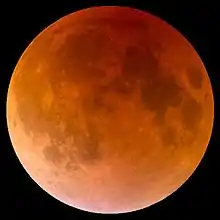March 1960 lunar eclipse
A total lunar eclipse took place on March 13, 1960. The moon passed through the center of the Earth's shadow.[1]
| Total Lunar Eclipse March 13, 1960 | |
|---|---|
| (No photo) | |
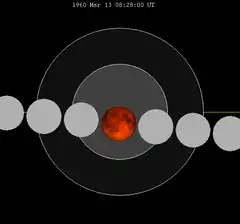 The moon passes west to east (right to left) across the Earth's umbral shadow, shown in hourly intervals. | |
| Series | 122 (53 of 75) |
| Duration (hr:mn:sc) | |
| Totality | |
| Partial | |
| Penumbral | |
| Contacts | |
| P1 | UTC |
| U1 | |
| U2 | |
| Greatest | |
| U3 | |
| U4 | |
| P4 | |
This is the 53rd member of Lunar Saros 122. The next event is the March 1978 lunar eclipse.
This eclipse afforded astrophysicist Richard W. Shorthill the opportunity to make the first infrared pyrometric temperature scans of the lunar surface, and led to his discovery of the first lunar "hot spot" observed from Earth. Shorthill found that the temperature of the floor of the Tycho crater was 216° Kelvin (—57° C), significantly higher than the 160°K (—113° C) in the area around the crater.[2]
Visibility
It was visible from North America, seen rising from Australia, and eastern Asia, and setting from South America, western Europe and Africa.
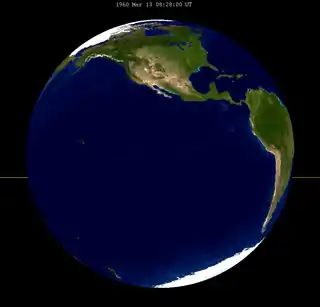
Related lunar eclipses
Lunar year series
| Ascending node | Descending node | |||||
|---|---|---|---|---|---|---|
| Saros | Date Viewing |
Type Chart |
Saros | Date Viewing |
Type Chart | |
| 102 | 1958 Apr 4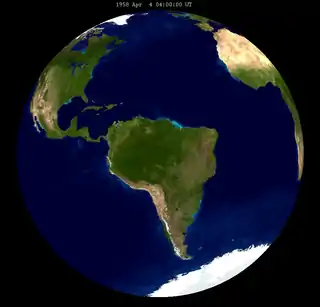 |
Penumbral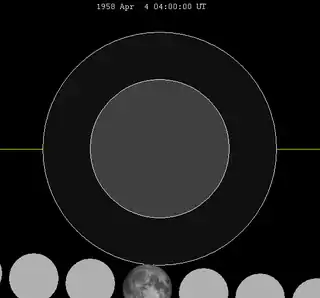 | ||||
| 112 | 1959 Mar 24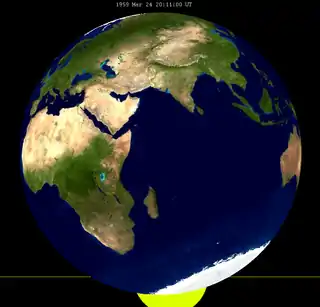 |
Partial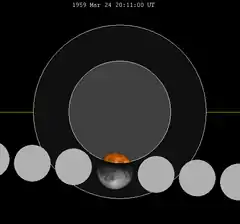 |
117 | 1959 Sep 17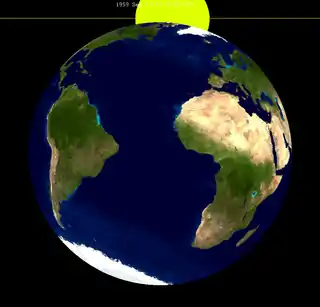 |
Penumbral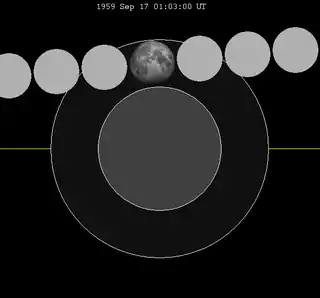 | |
| 122 | 1960 Mar 13 |
Total |
127 | 1960 Sep 5 |
Total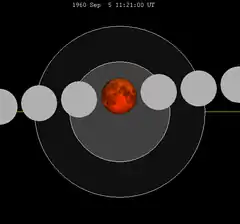 | |
| 132 | 1961 Mar 2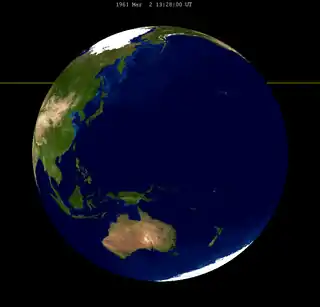 |
Partial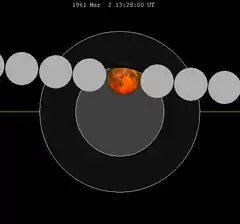 |
137 | 1961 Aug 26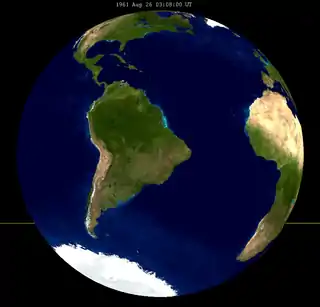 |
Partial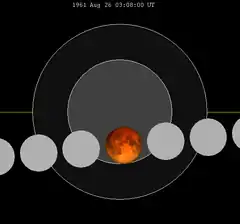 | |
| 142 | 1962 Feb 19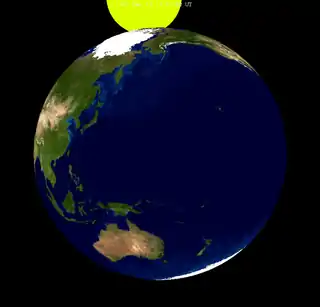 |
Penumbral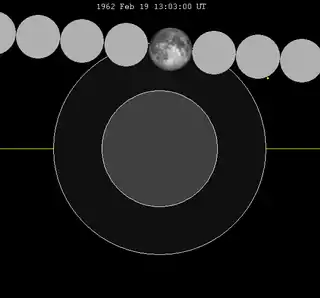 |
147 | 1962 Aug 15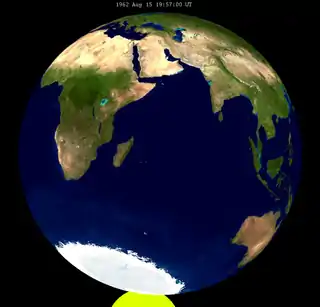 |
Penumbral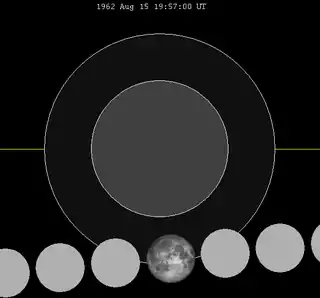 | |
| Last set | 1958 May 3 | Last set | 1958 Oct 27 | |||
| Next set | 1963 Jan 9 | Next set | 1962 Jul 17 | |||
See also
- List of lunar eclipses
- List of 20th-century lunar eclipses
Notes
- Hermit Eclipse: Saros cycle 122
- F. Link, Eclipse Phenomena in Astronomy (Springer, 2012) p119
This article is issued from Wikipedia. The text is licensed under Creative Commons - Attribution - Sharealike. Additional terms may apply for the media files.

